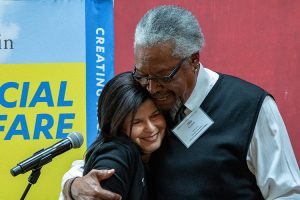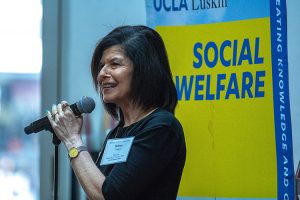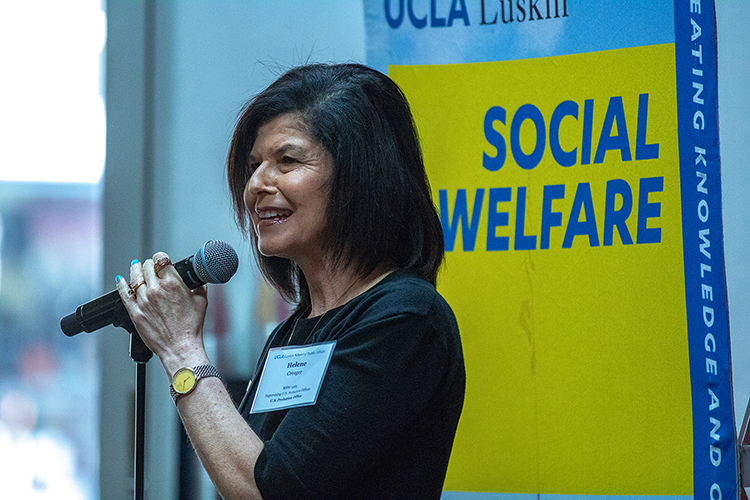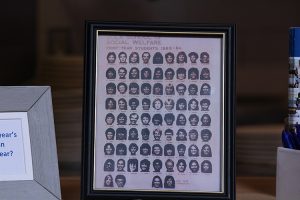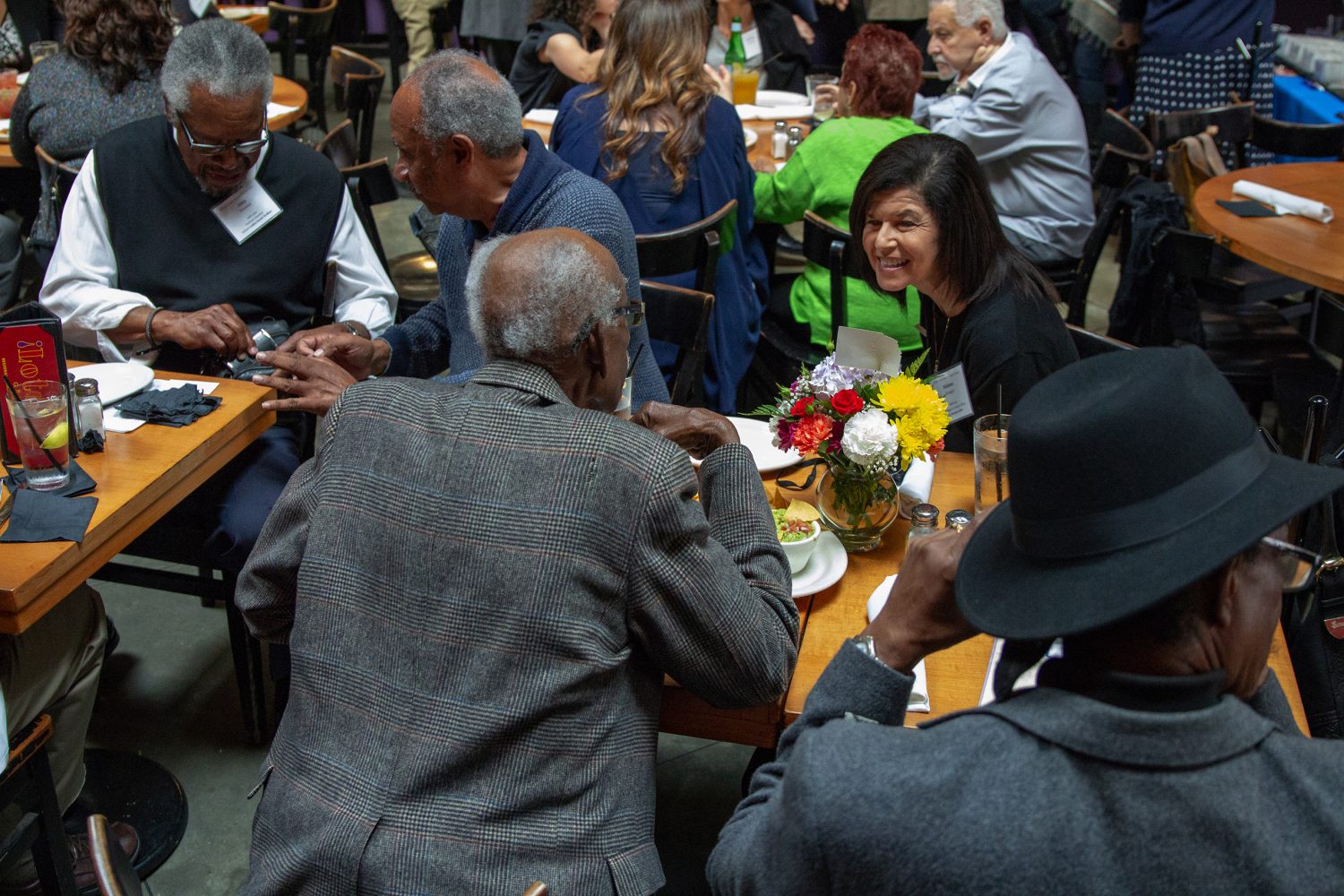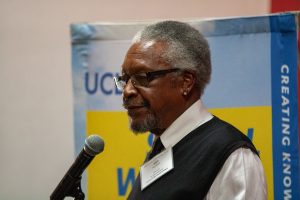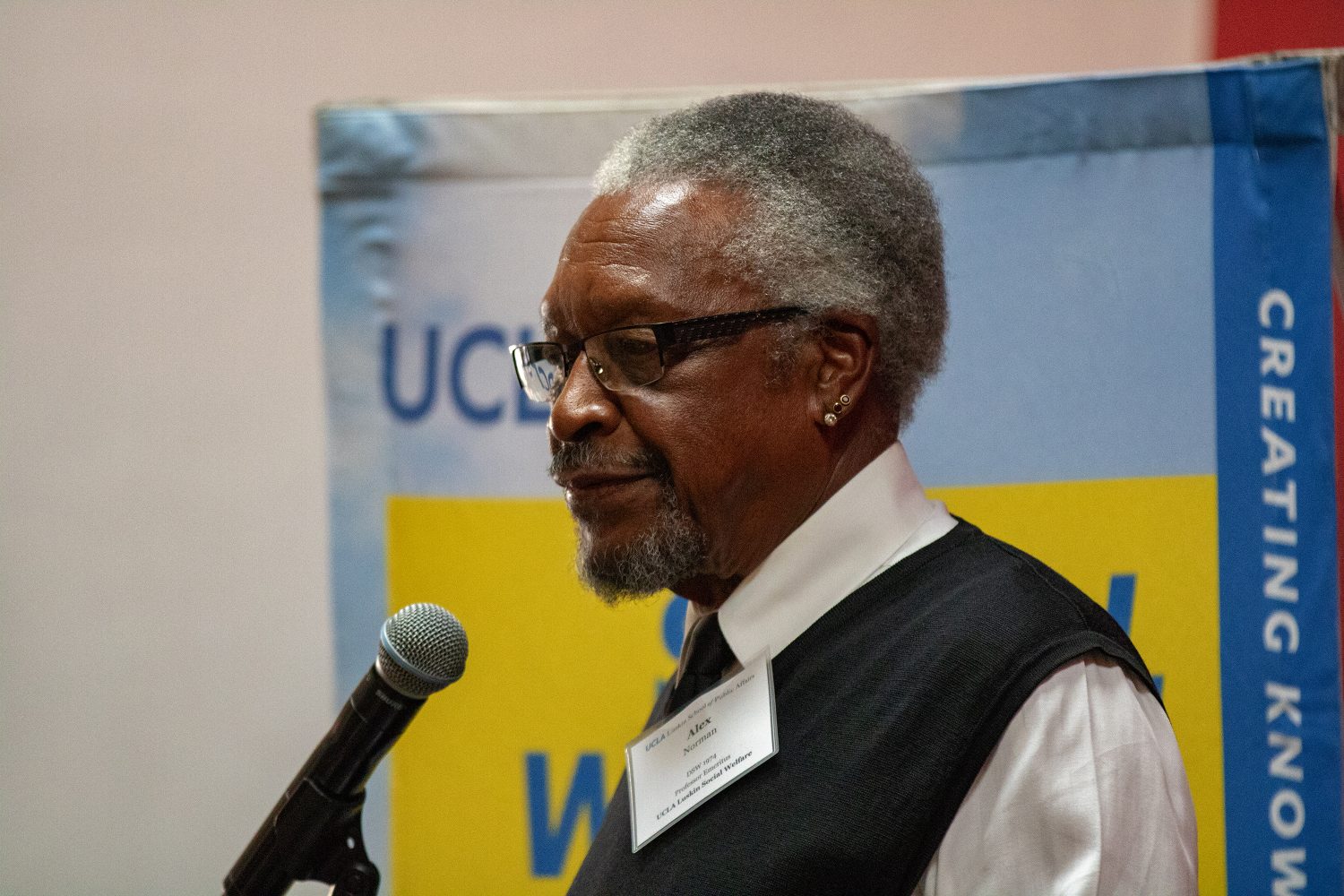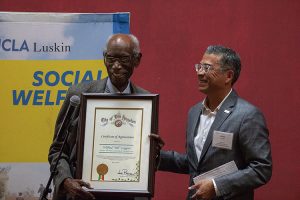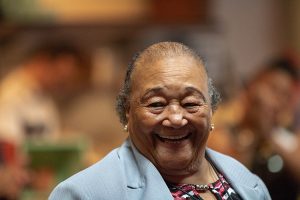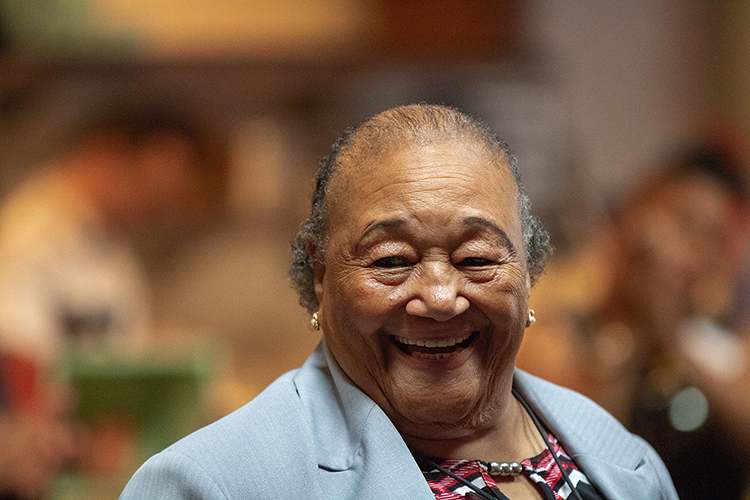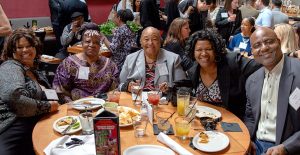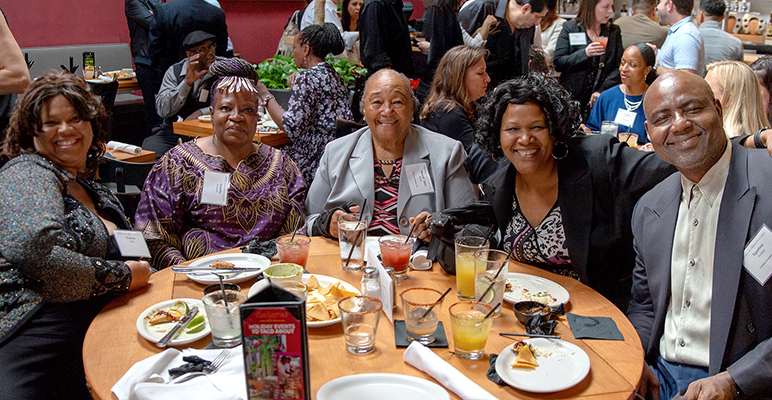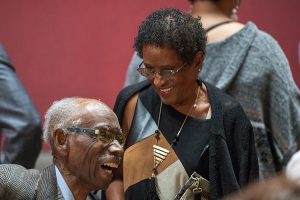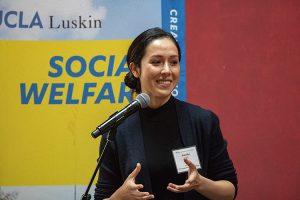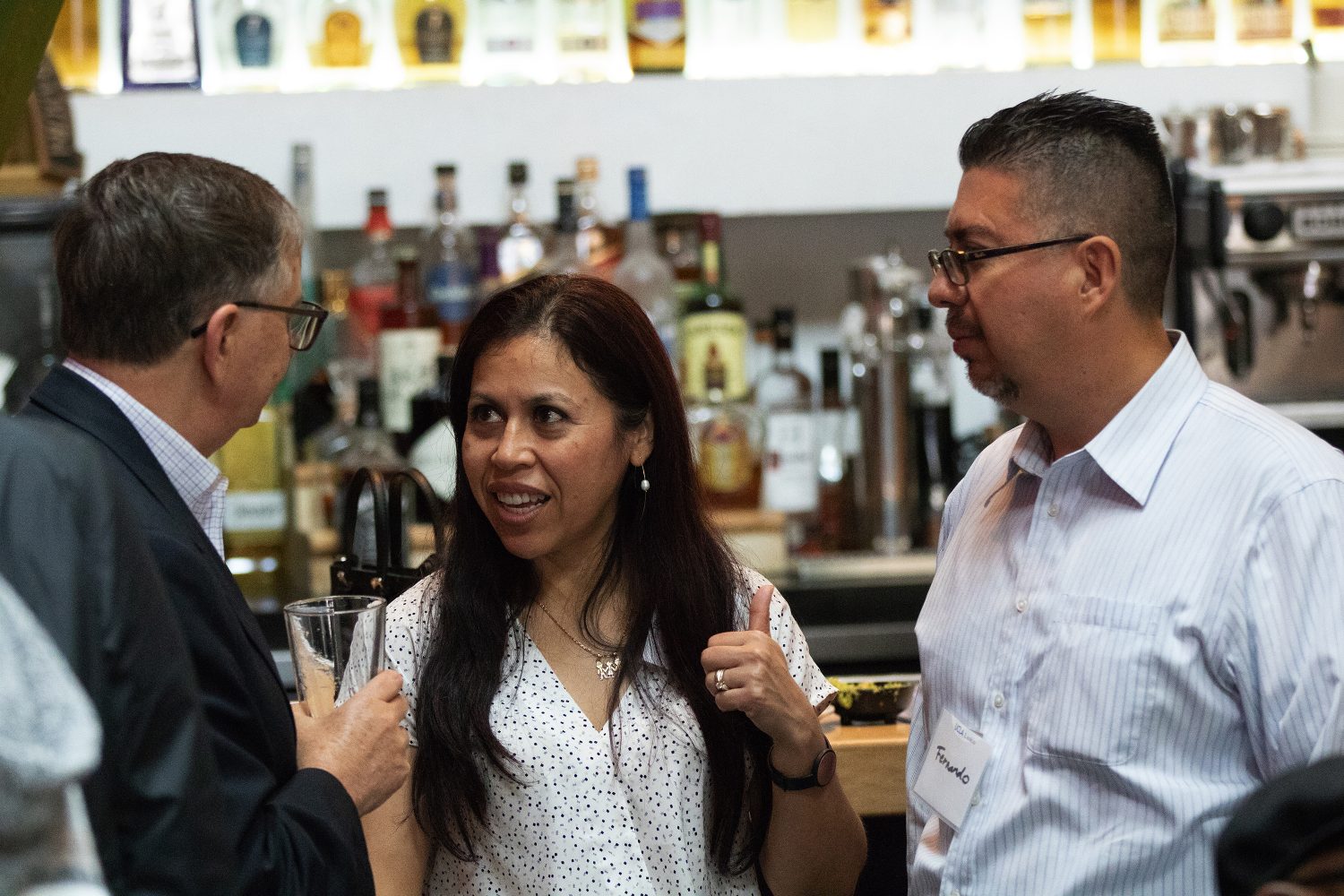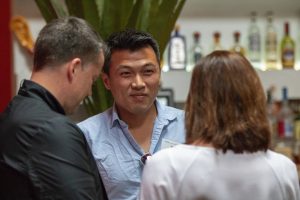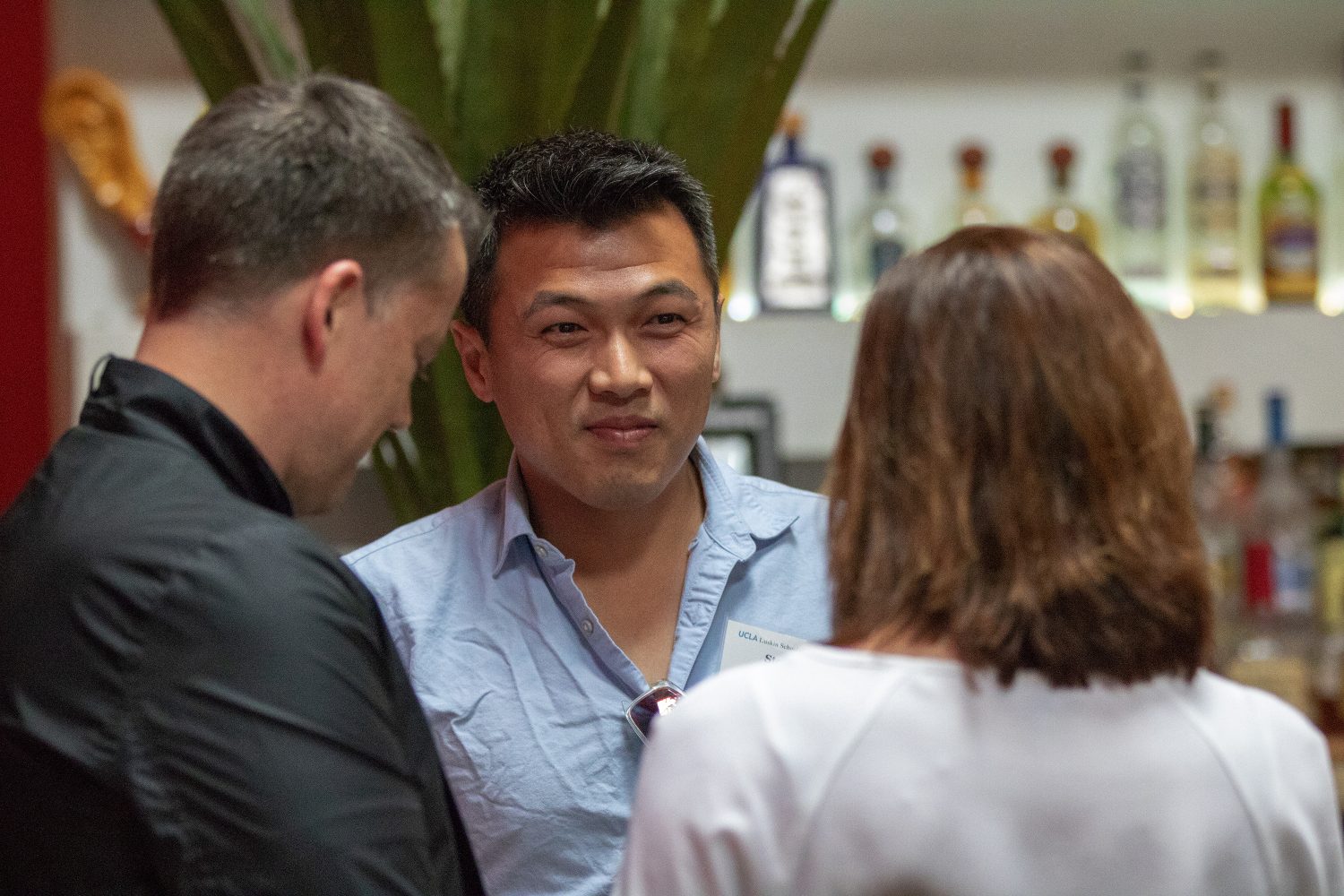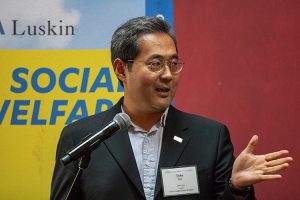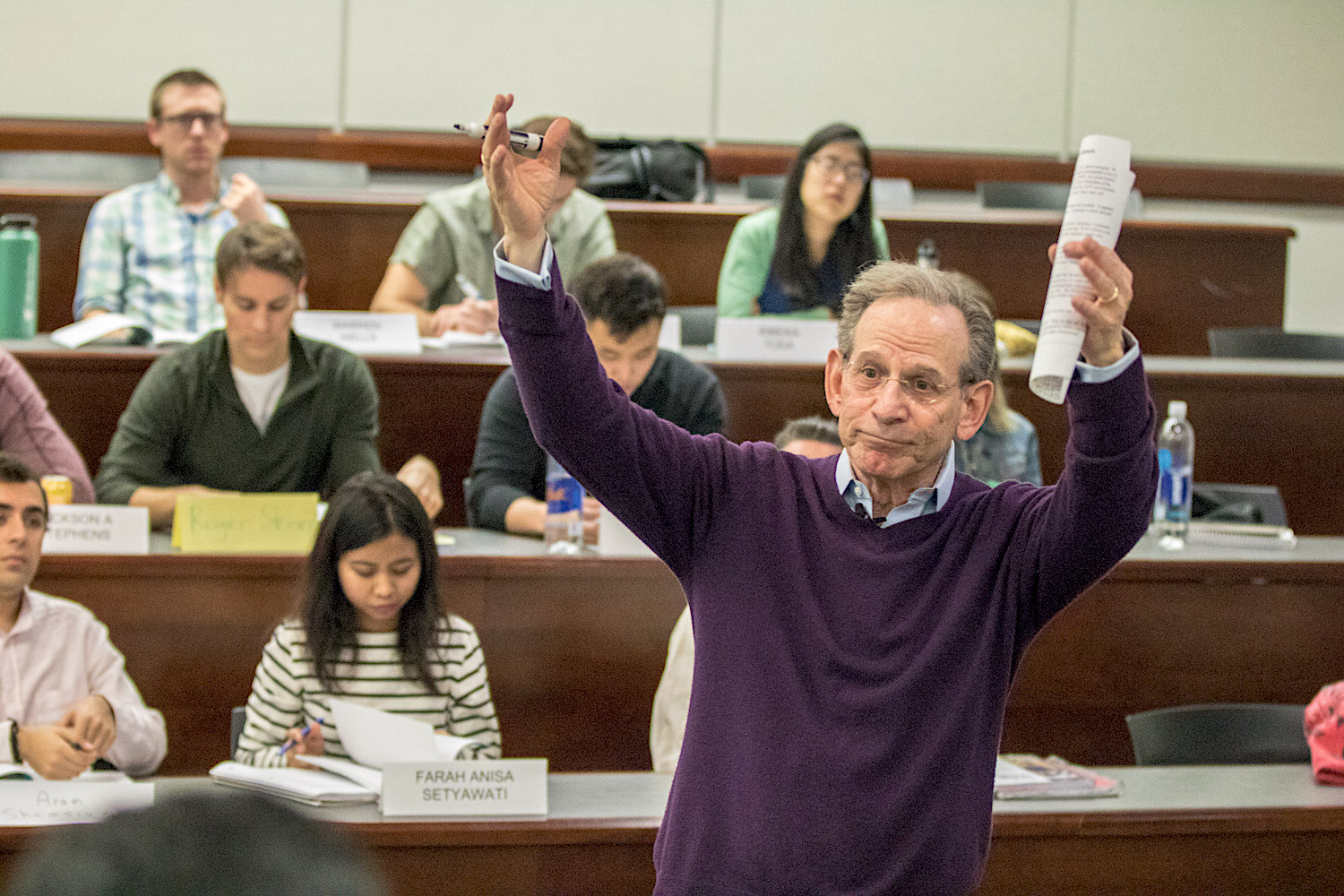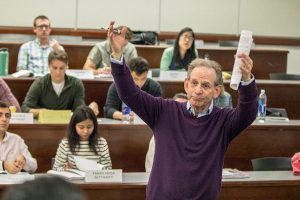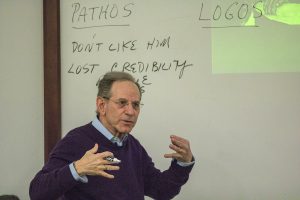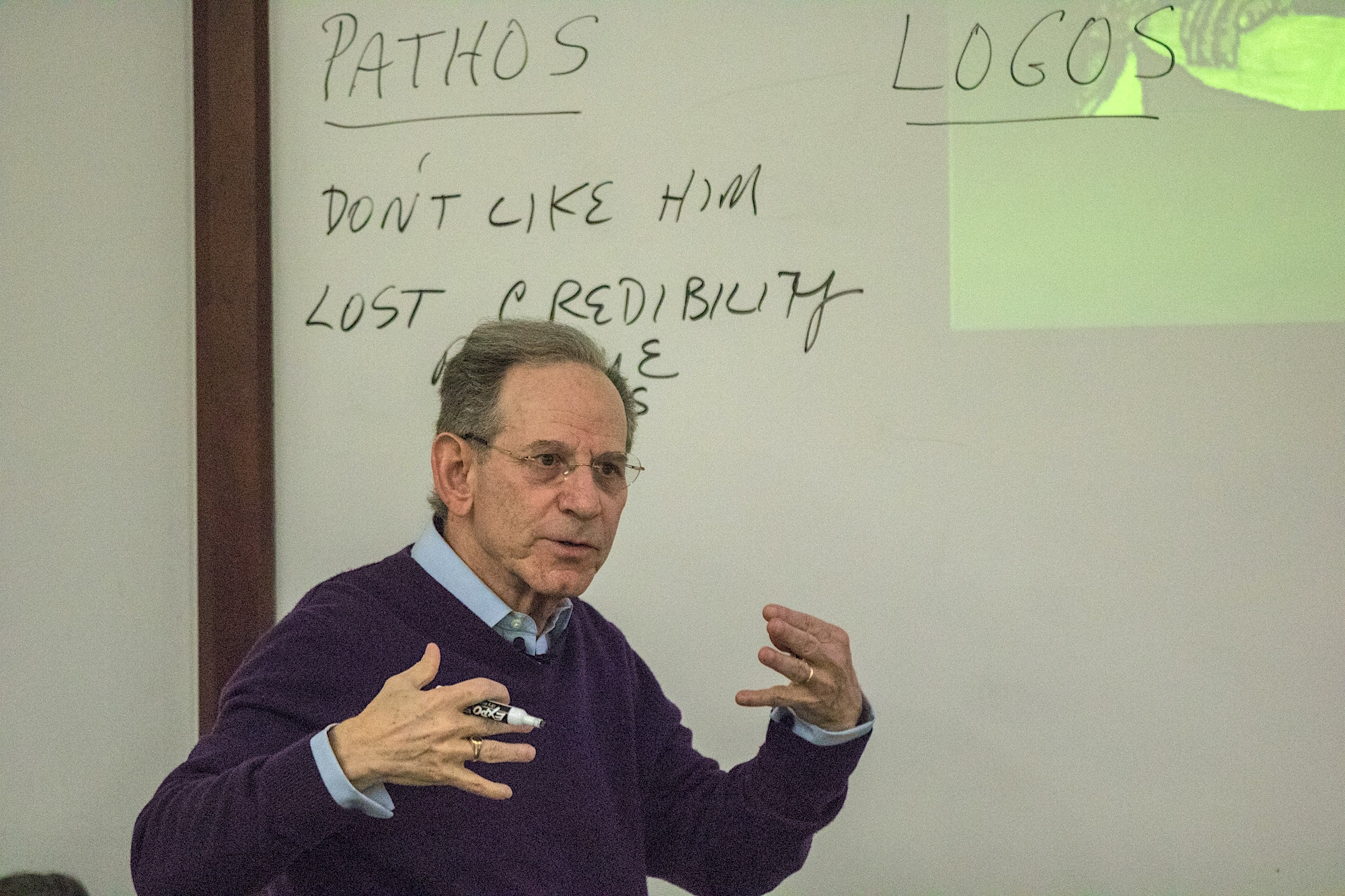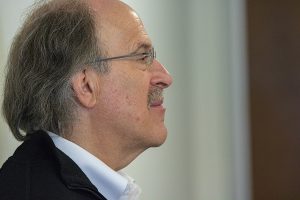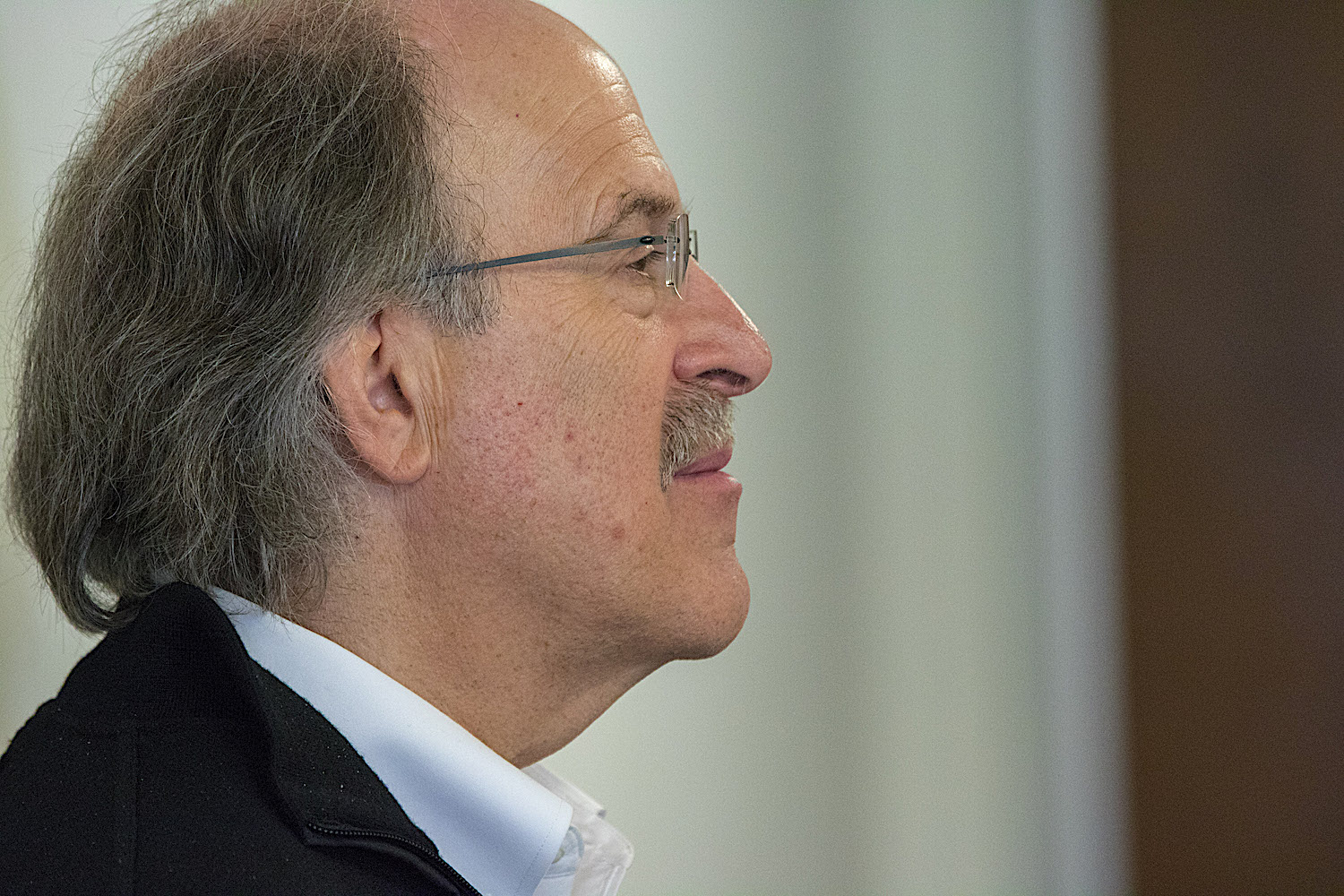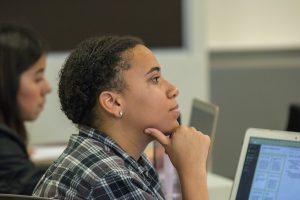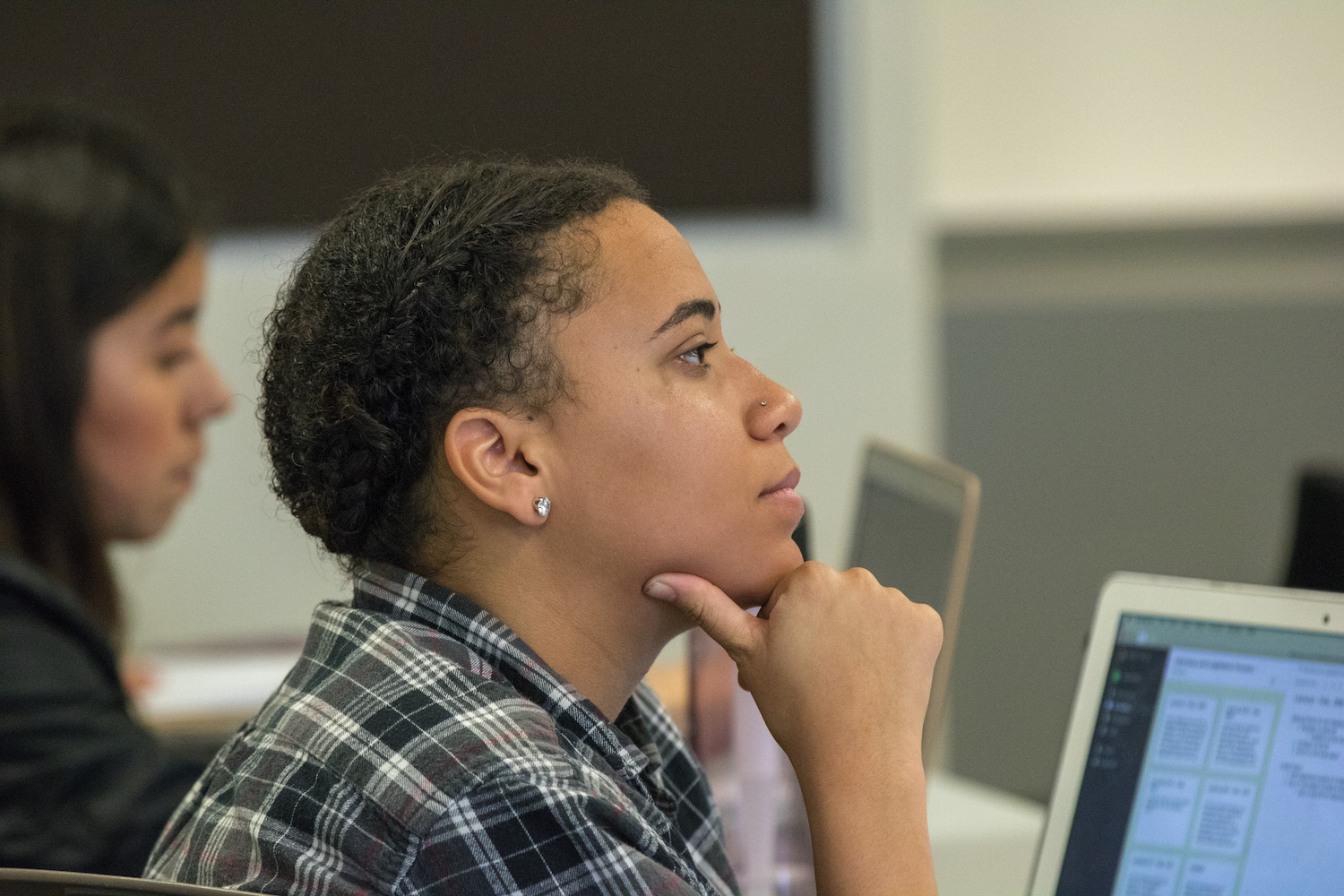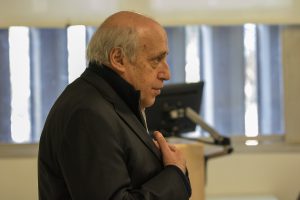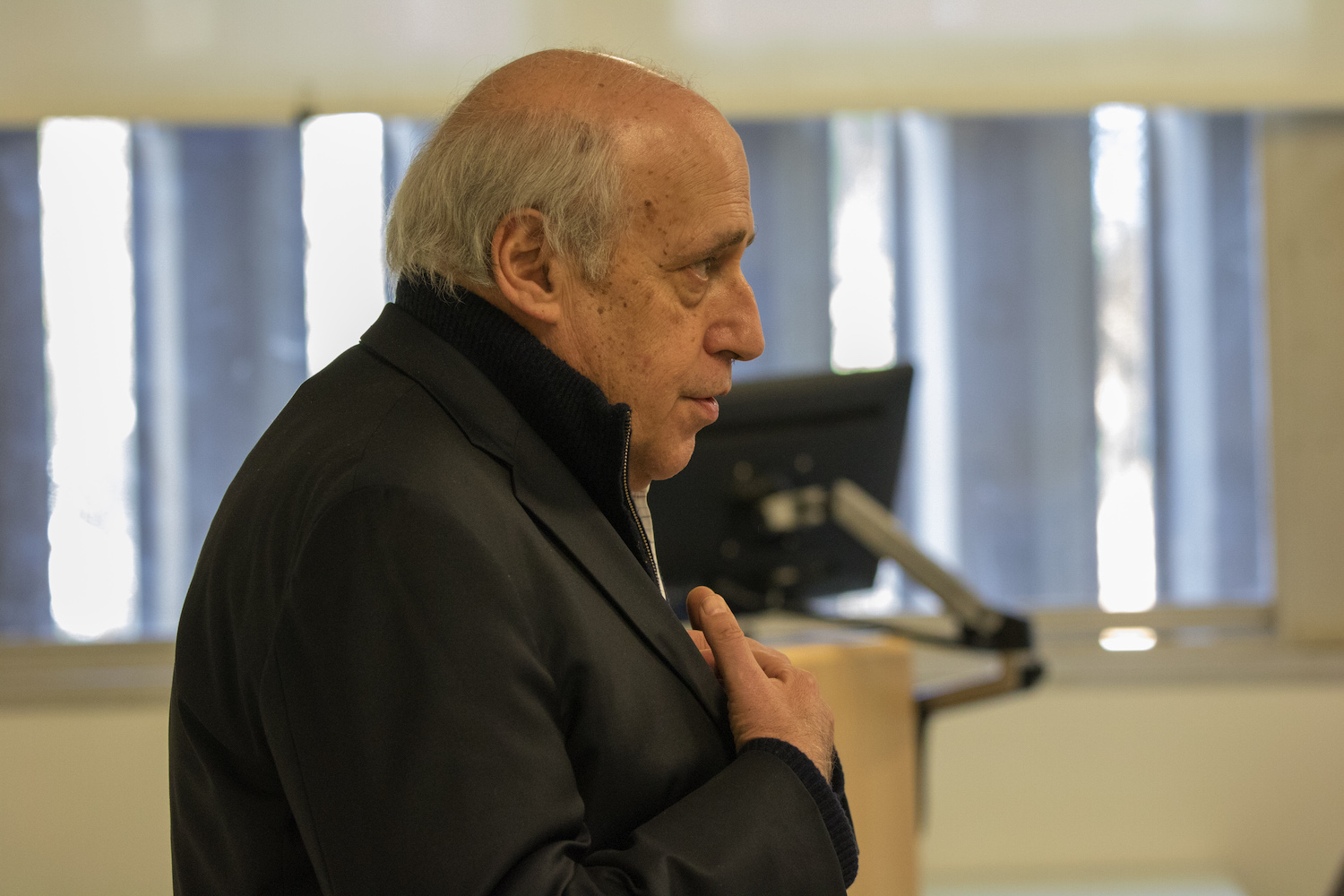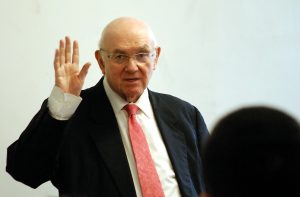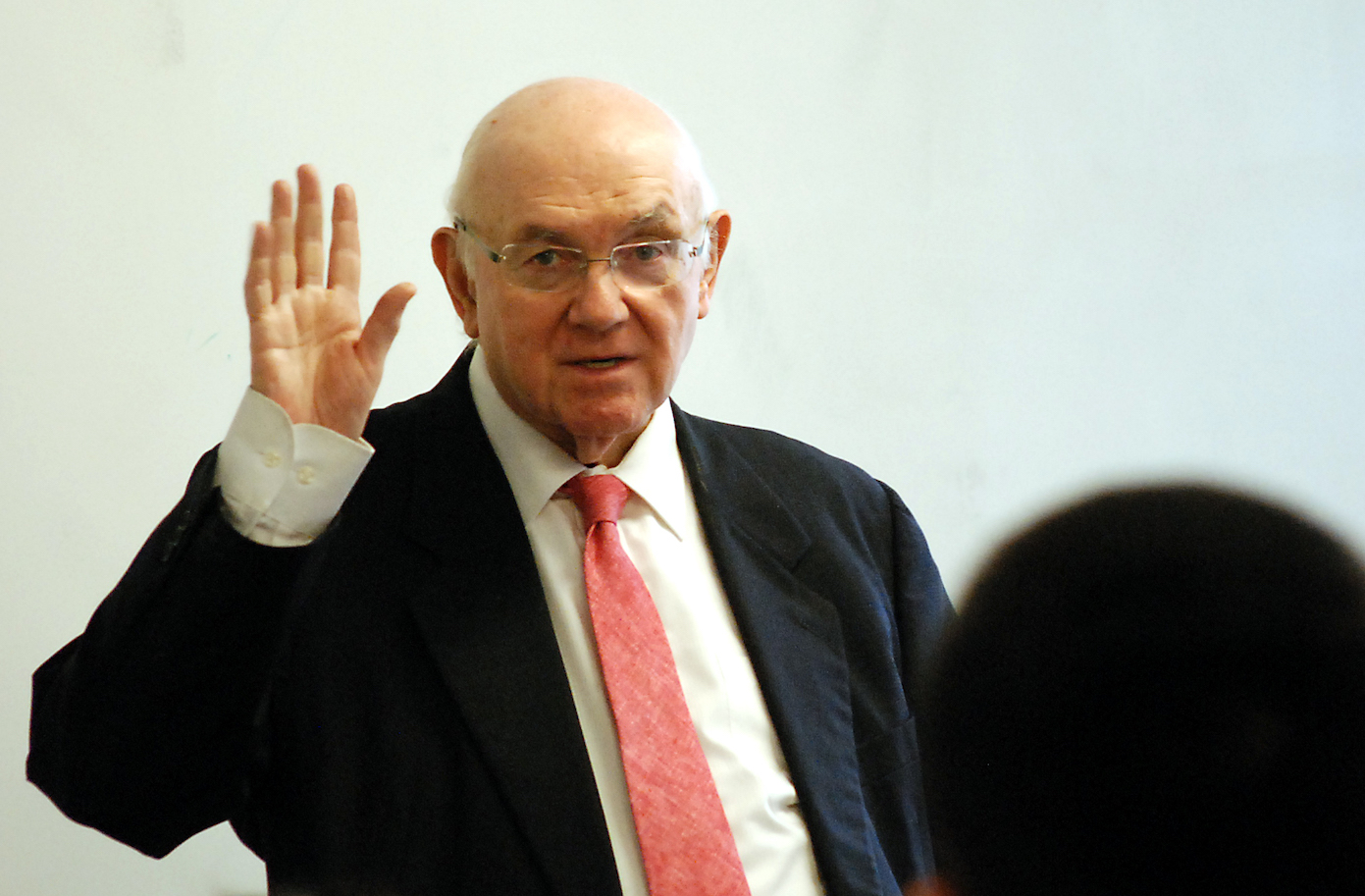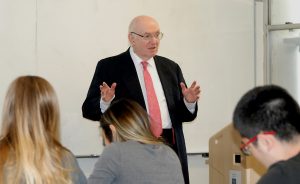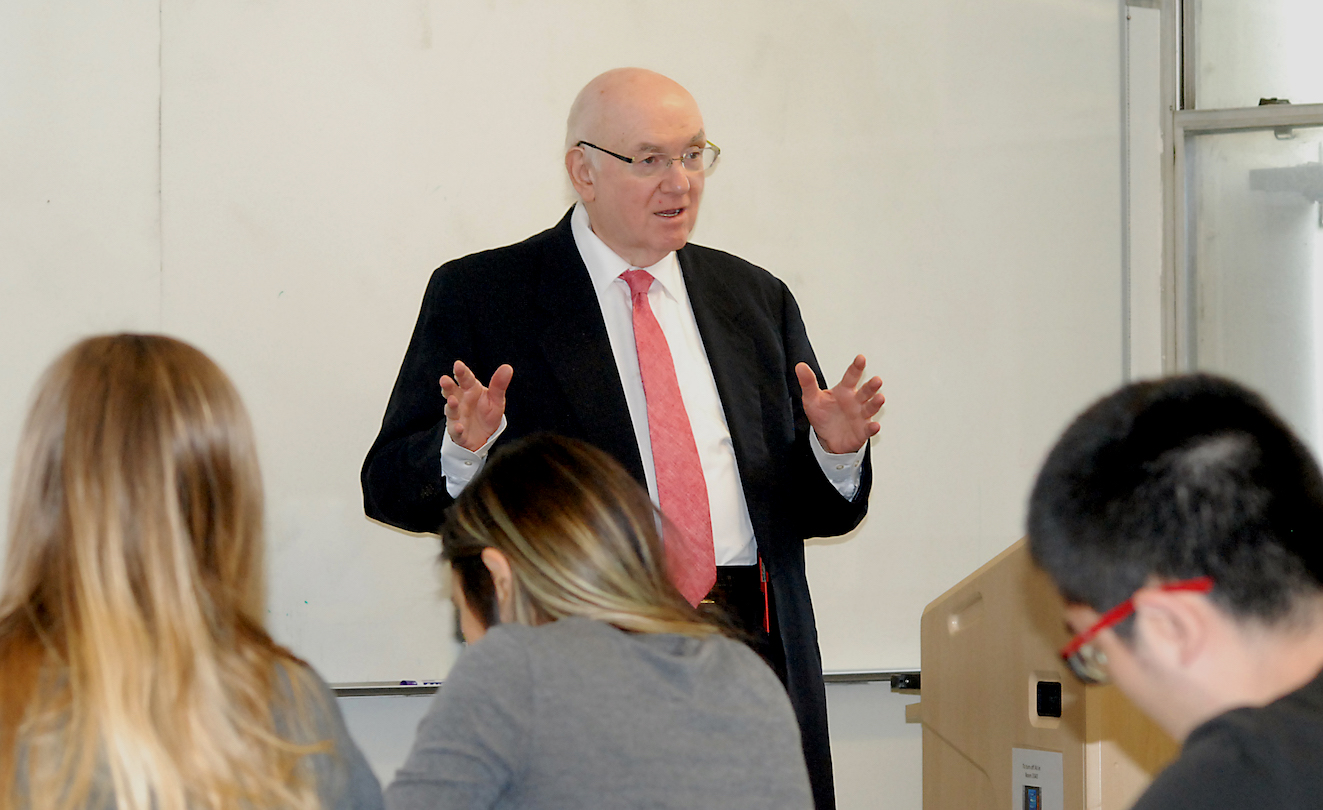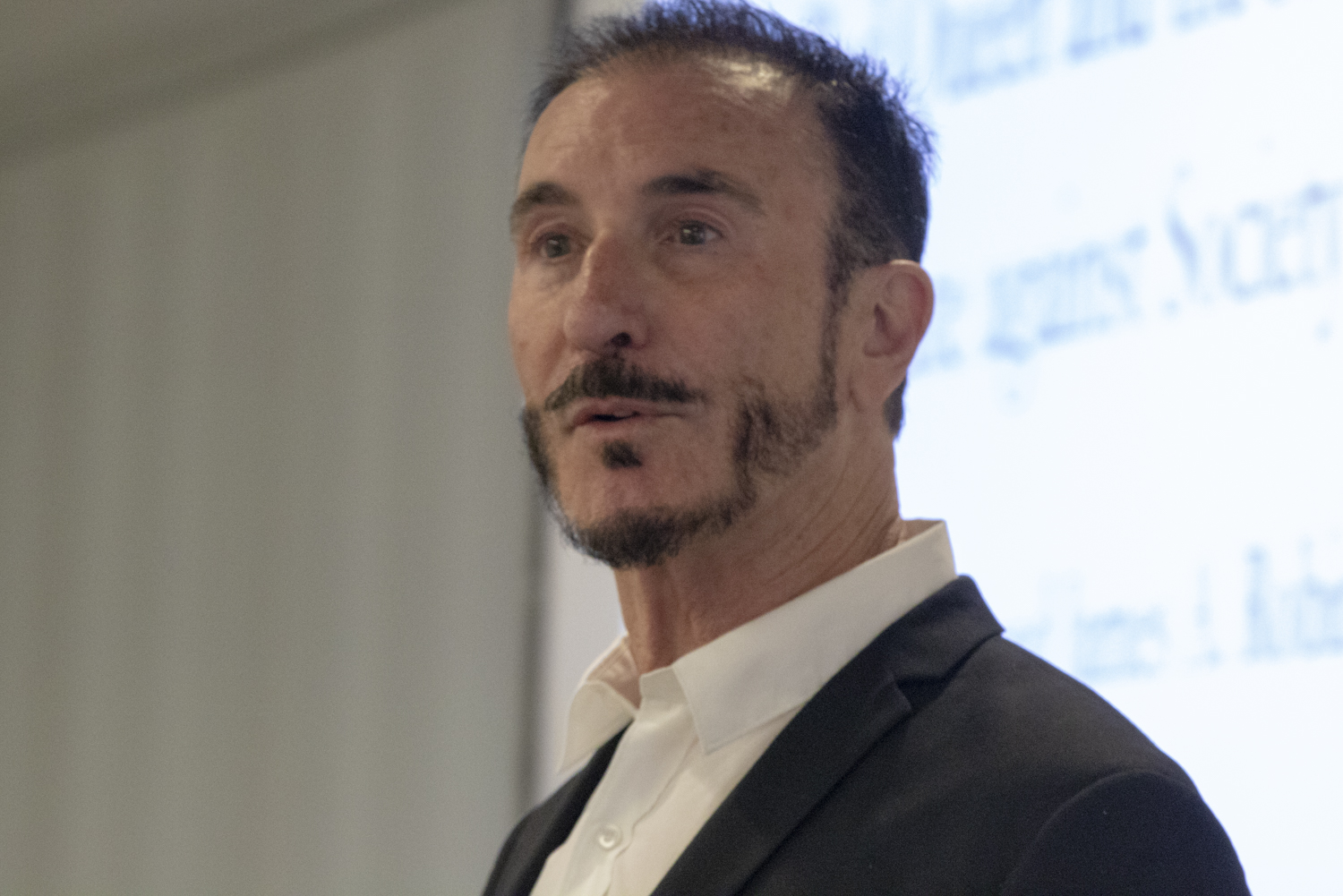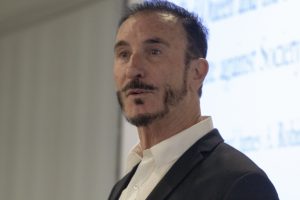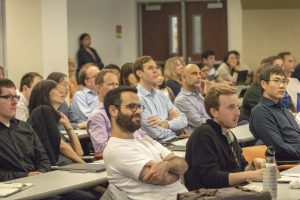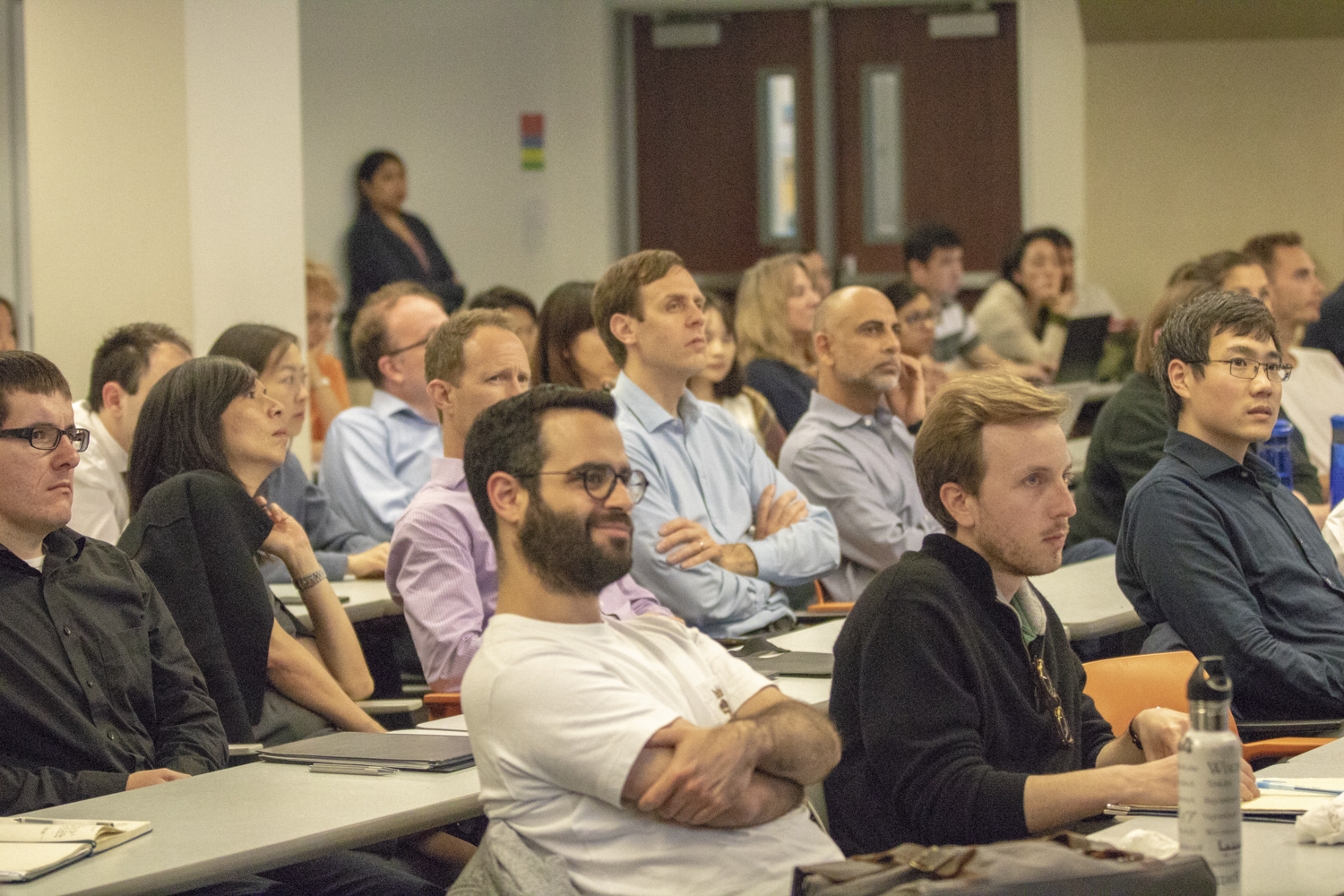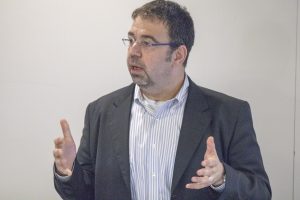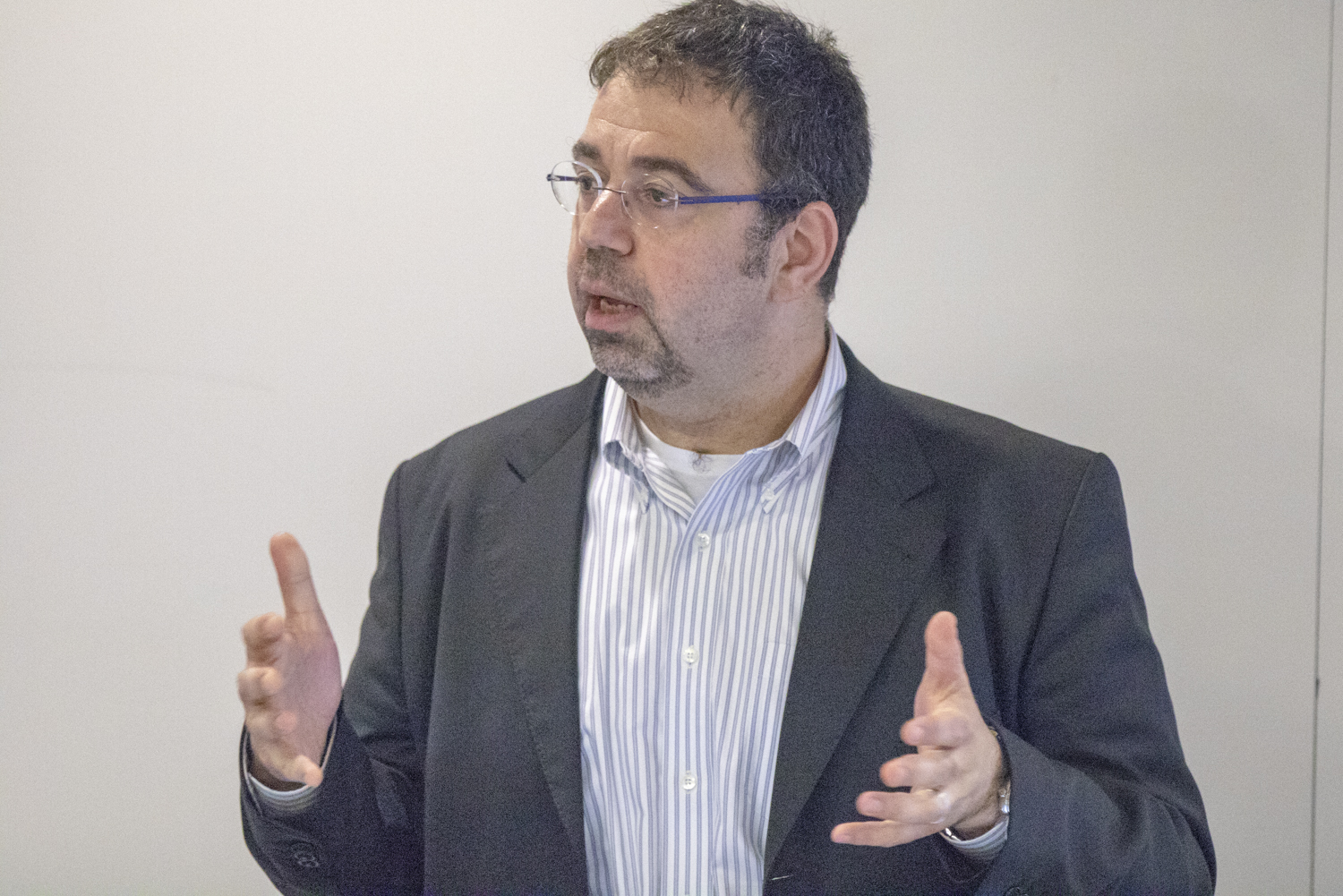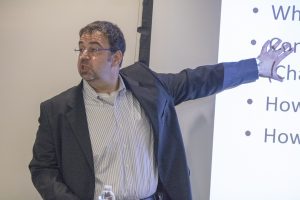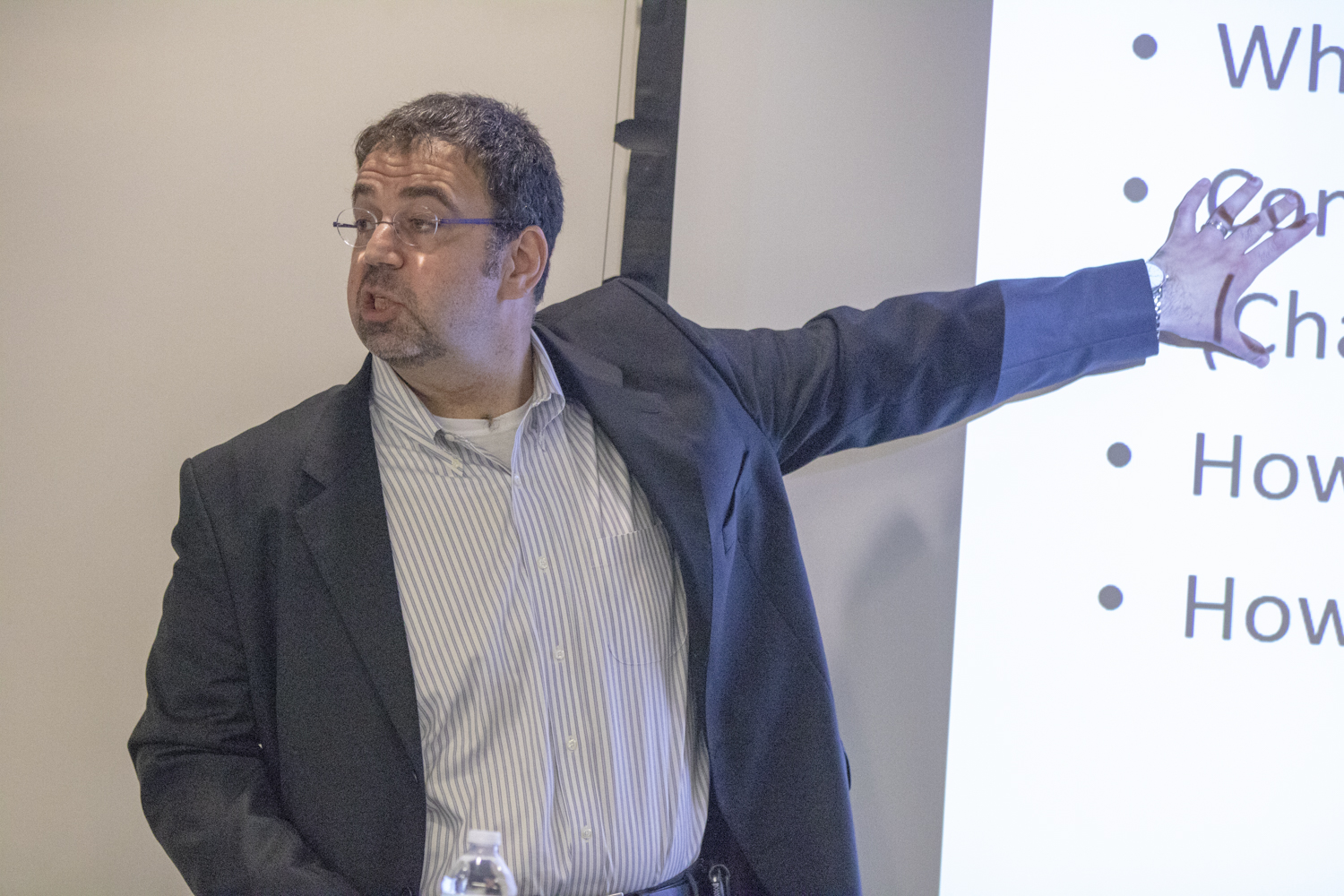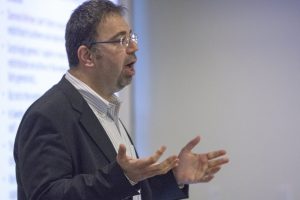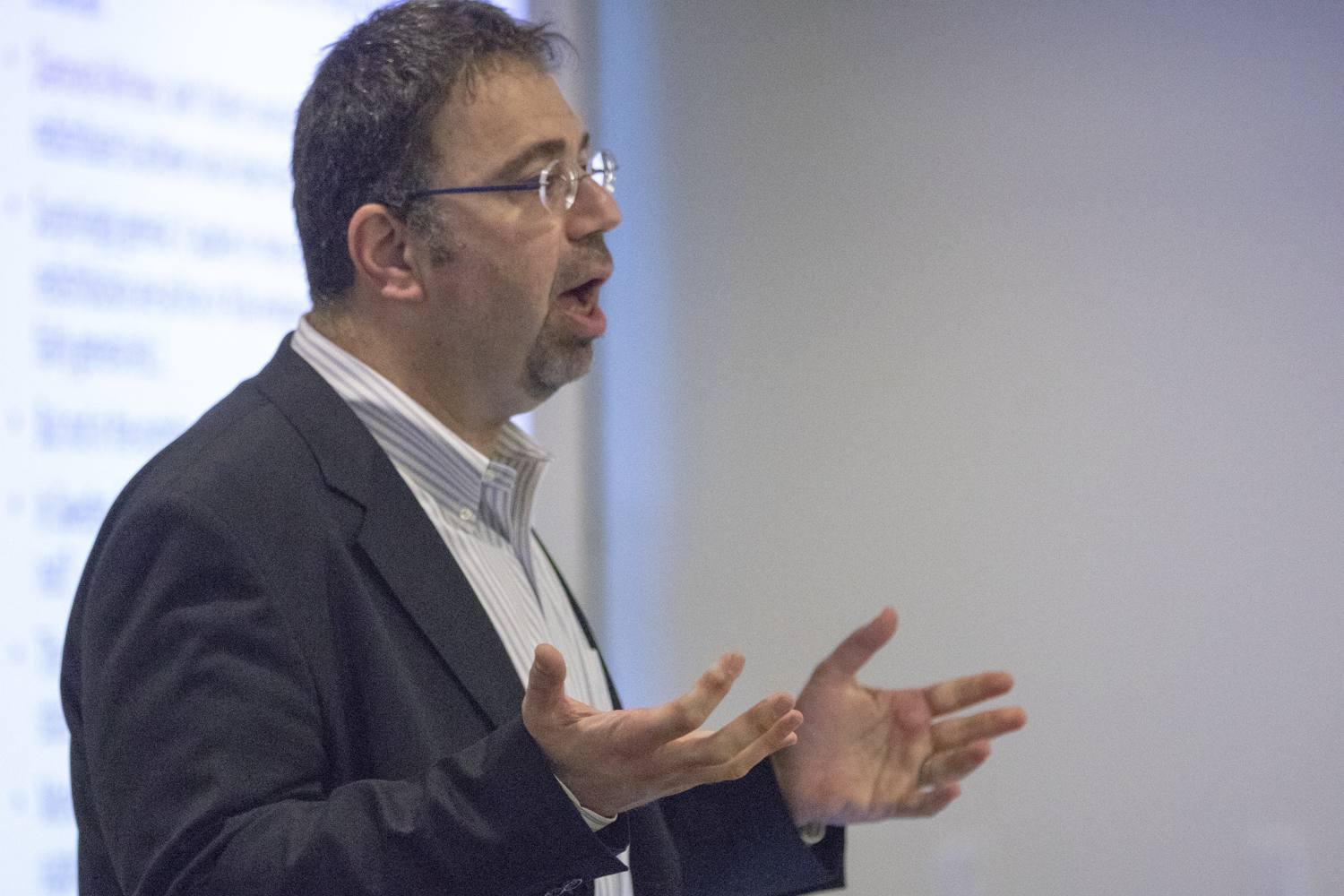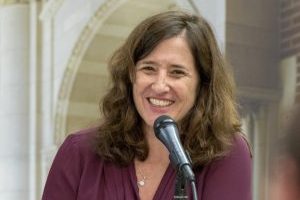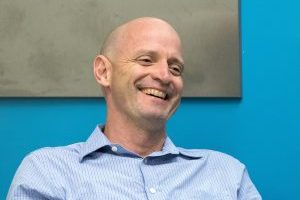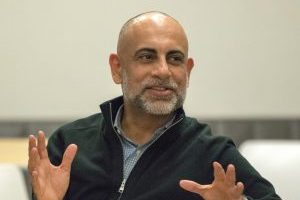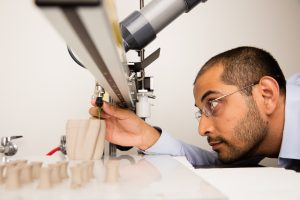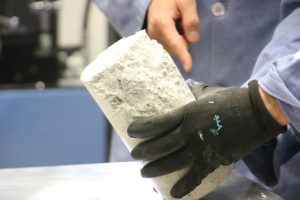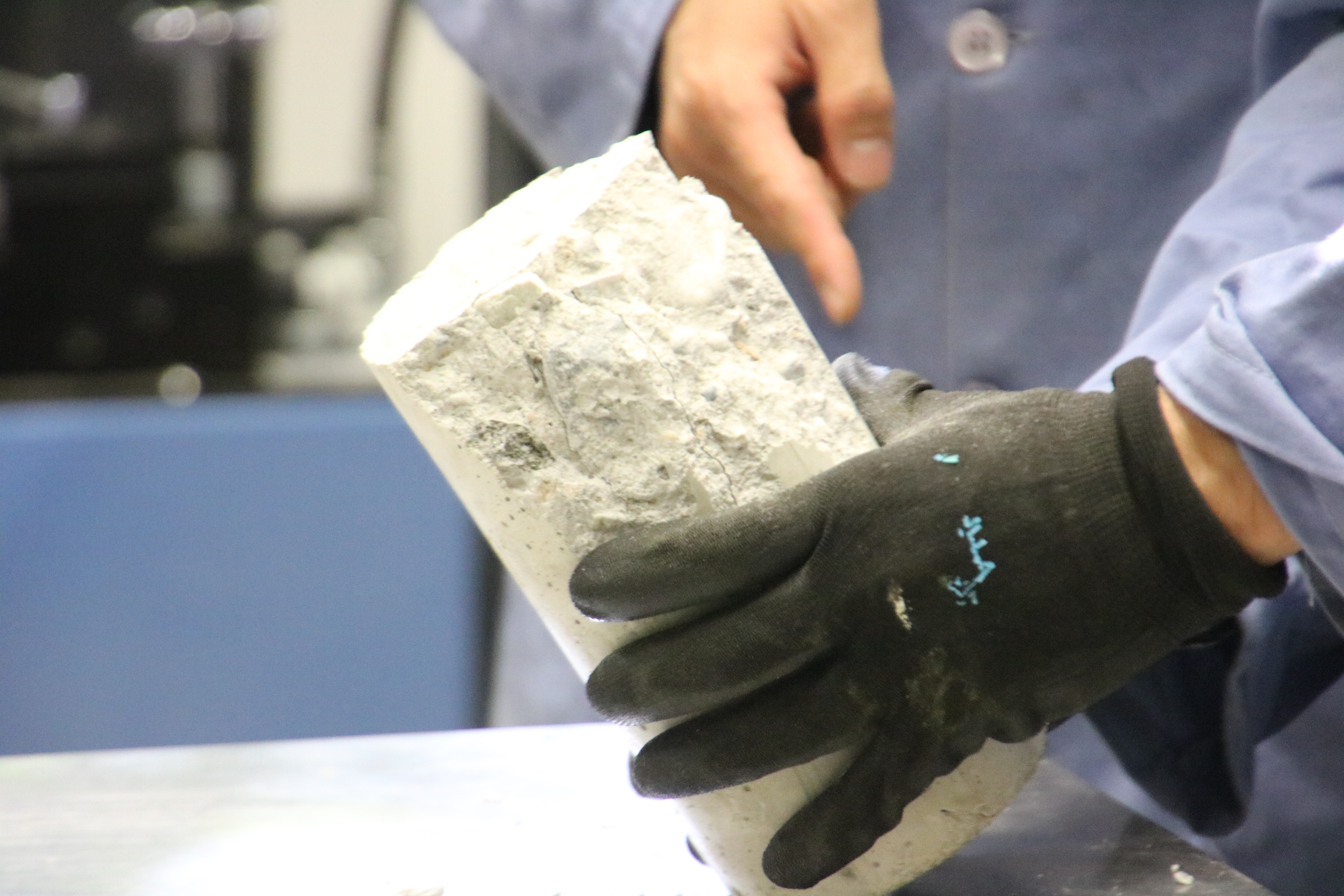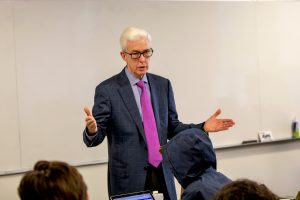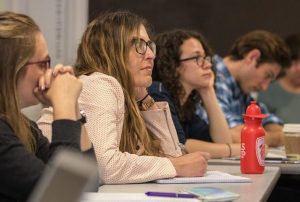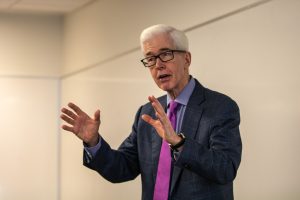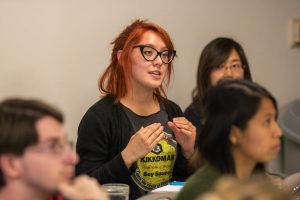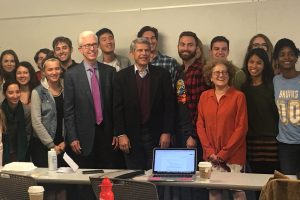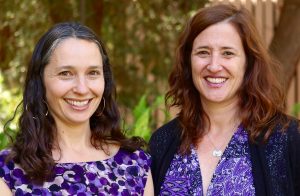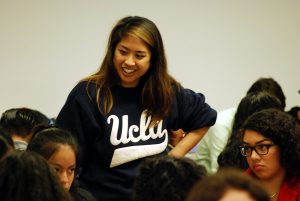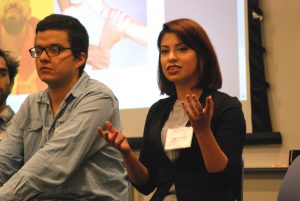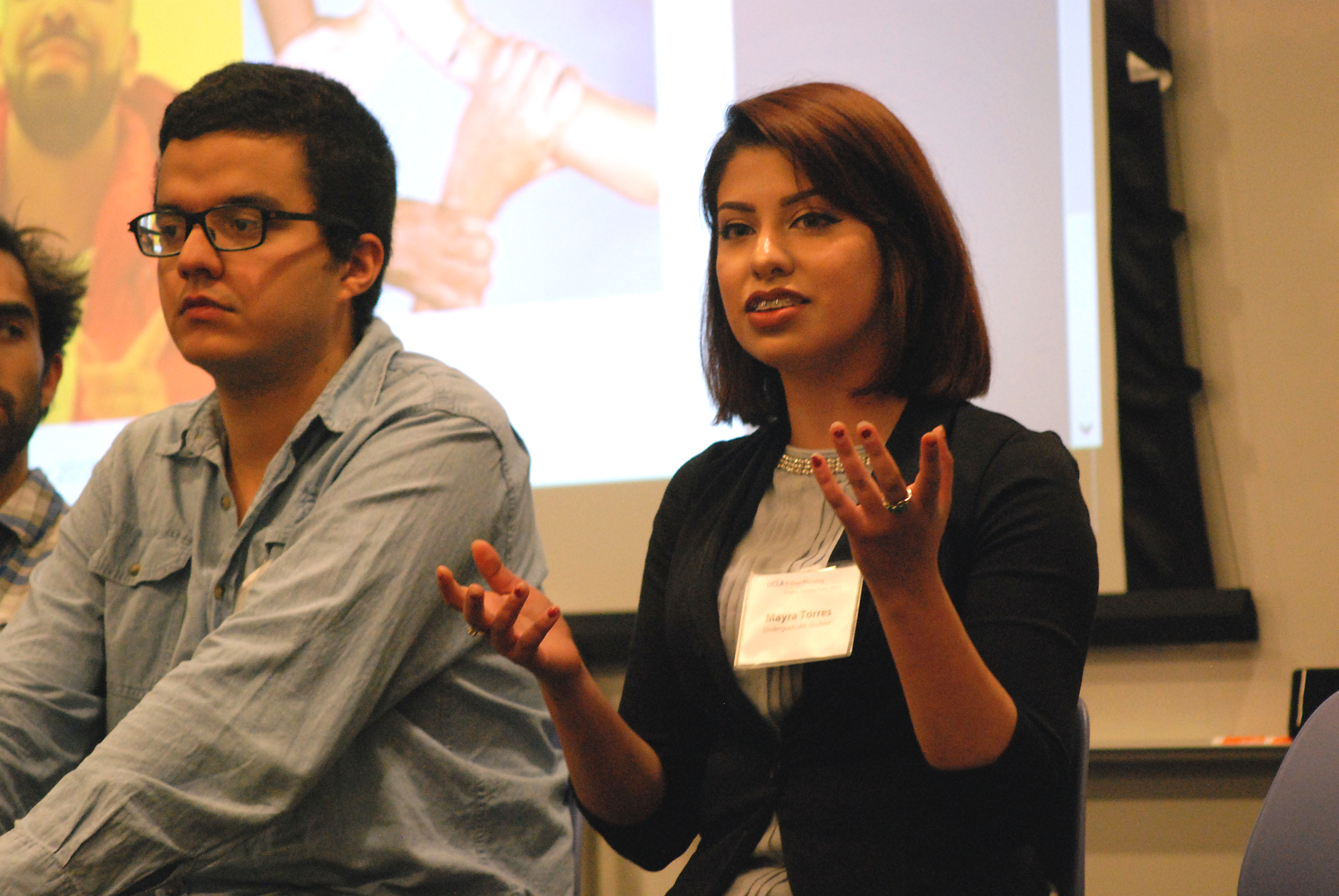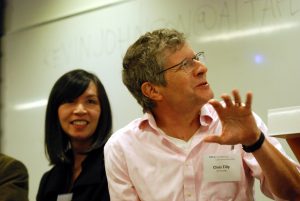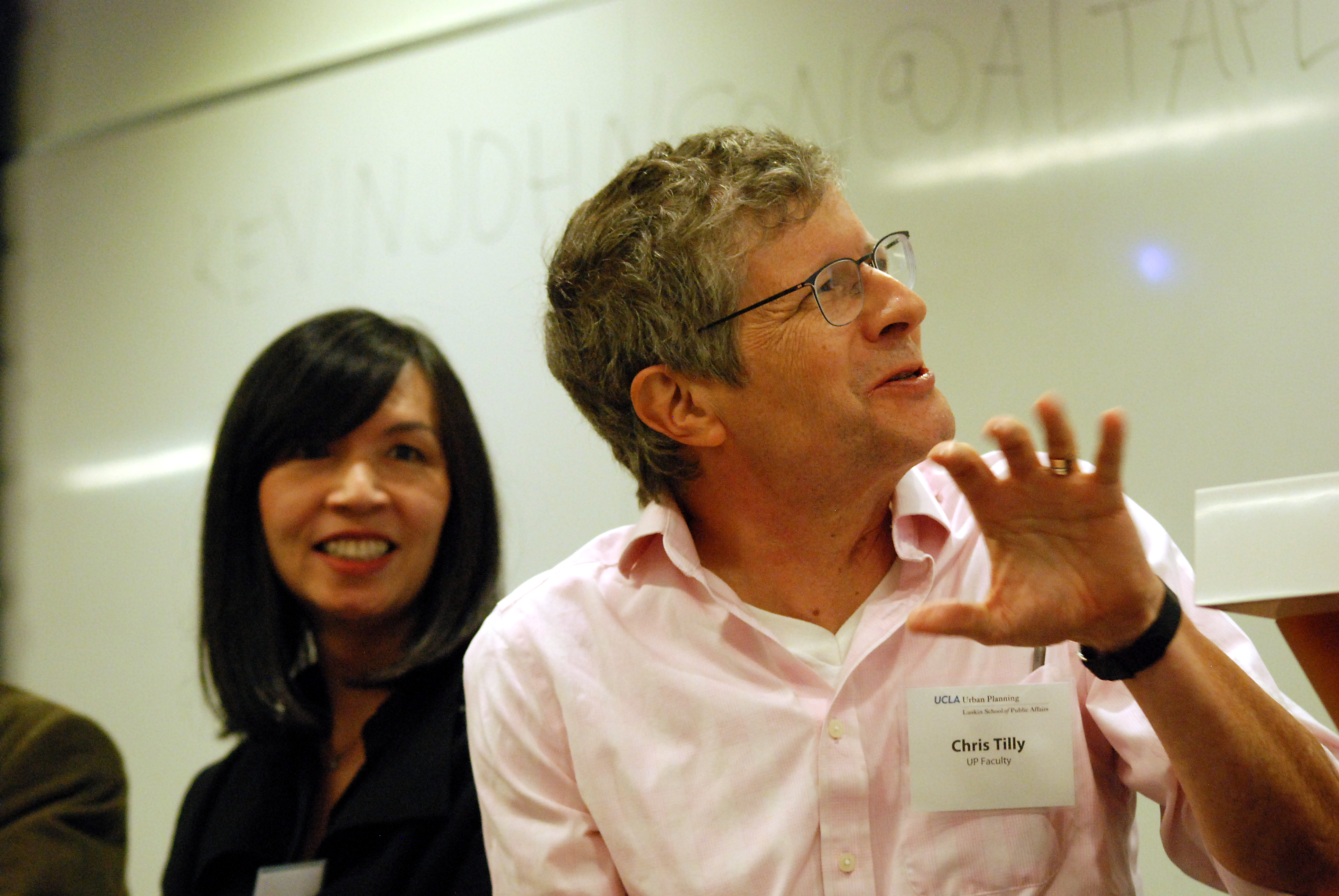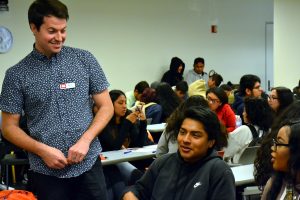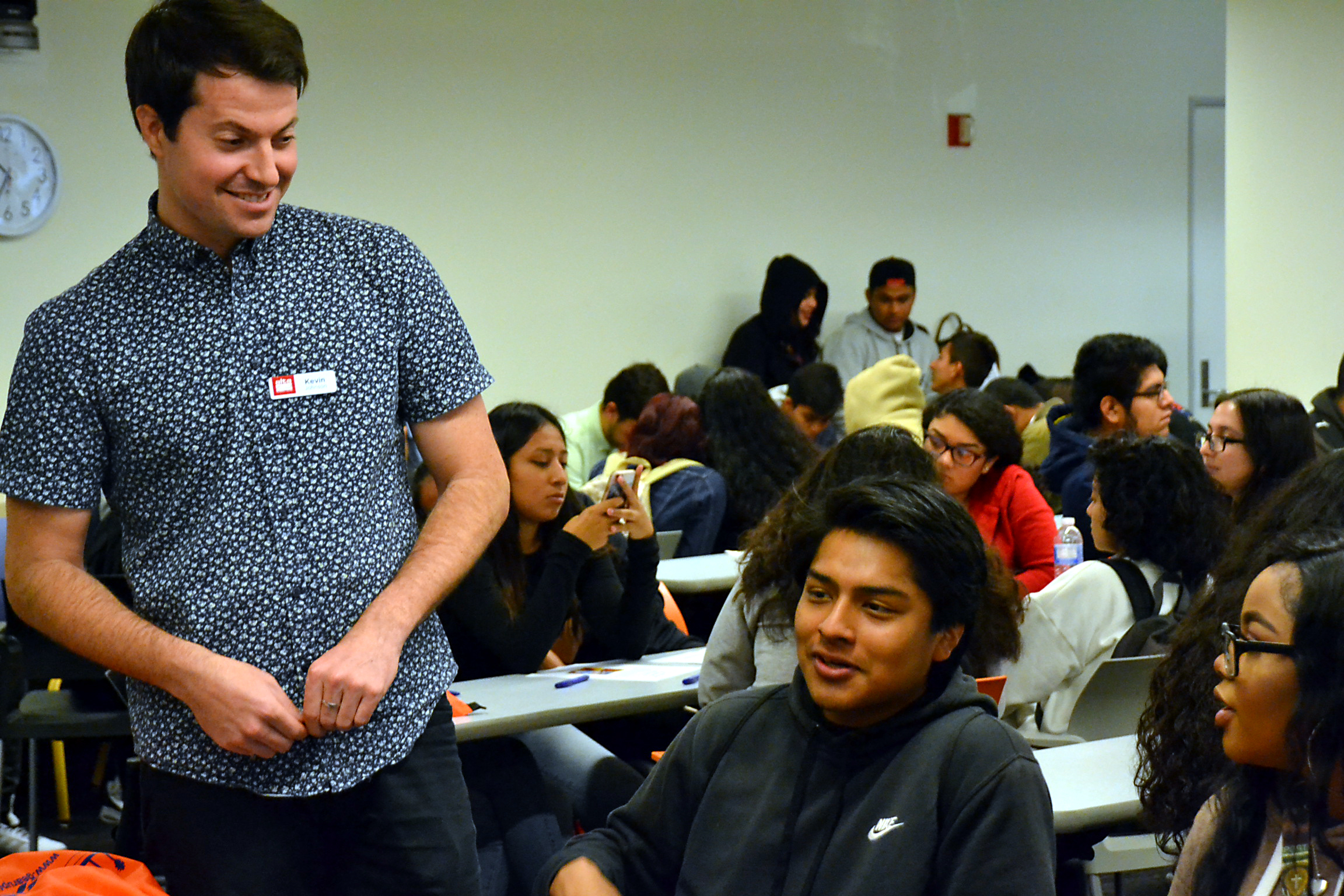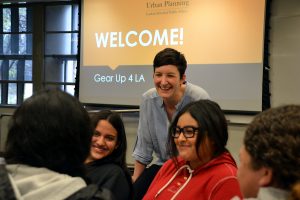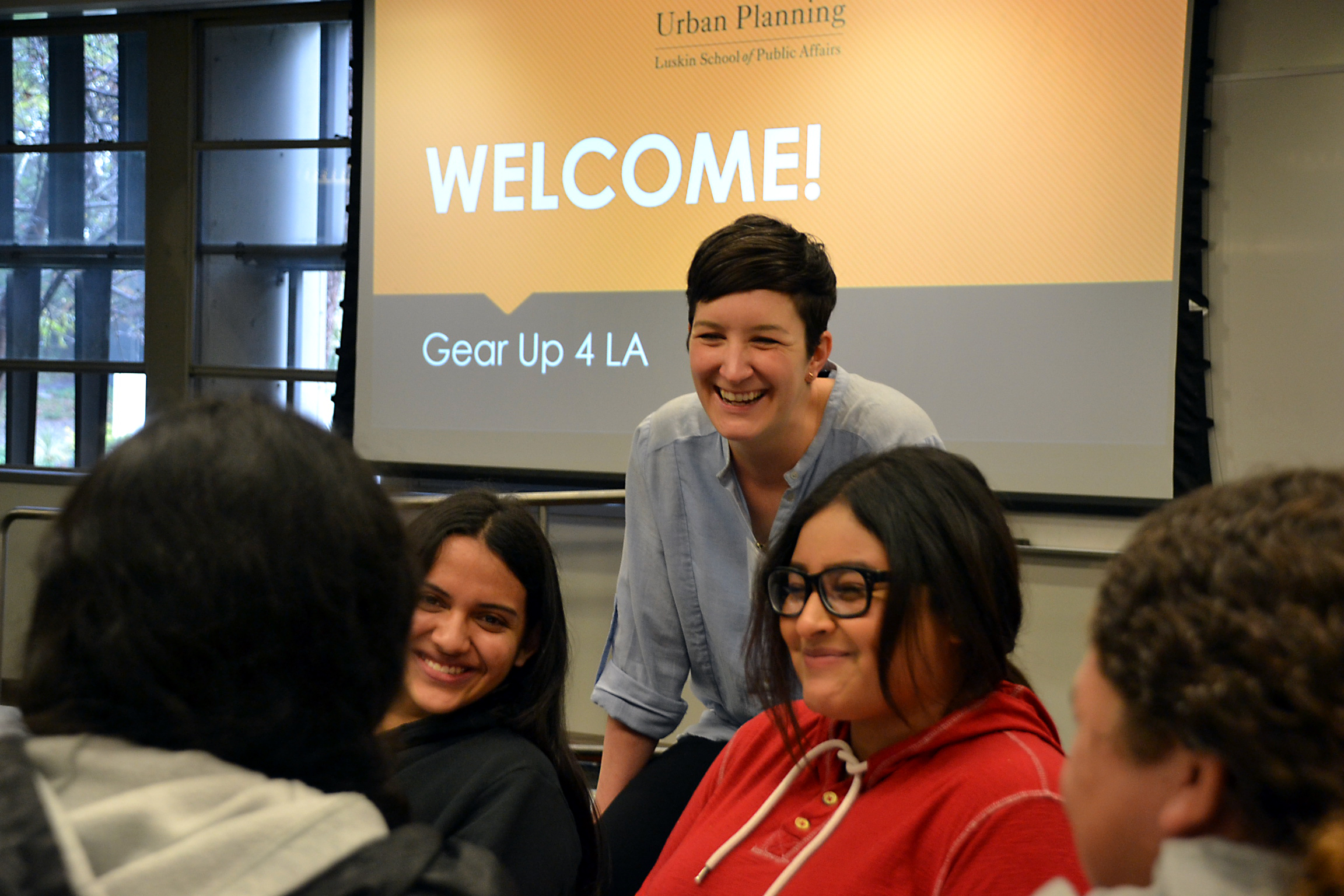Social Welfare Honors Alumna of the Year, Bestows Lifetime Achievement Award Large crowd from UCLA Luskin gathers in Hollywood to recognize achievements of Helene Creager MSW ’85 and Wilfred “Bill” Coggins MSW ’55
By Stan Paul
During the annual gathering to present Helene Creager MSW ’85 with its Alumna of the Year award, UCLA Luskin Social Welfare also recognized a lifetime of achievement by Wilfred “Bill” Coggins, a member of the Social Welfare graduating class 30 years earlier, in 1955.
Friends, family, faculty and coworkers jammed Loteria Grill in Hollywood on May 19, 2018, to celebrate Creager, a supervising U.S. probation officer, and Coggins, founder of the Kaiser Permanente Watts Counseling and Learning Center.
Since 2007, a Master of Social Welfare (MSW) graduate has received the alumni award named after the former vice chair and longtime director of field education at UCLA Luskin, Joseph A. Nunn MSW ’70 PhD ’90. He was on hand to congratulate both awardees and to introduce Coggins, who was the first-ever recipient of the Lifetime Achievement Award.
Distinguished at Every Level
Creager received her award from Professor Emeritus Alex Norman DSW ’74, who had nominated her and is also the person who first encouraged Creager to pursue an MSW at UCLA. “She has distinguished herself at every level of her professional employment,” Norman said.
In 1995, Creager joined the U.S. Probation Office for the Central District of California. Creager has served in a number of roles bringing a social justice emphasis to posts ranging from clinical director of a youth center for wards of the court and the Los Angeles County Probation Department.
During her time as an undergraduate psychology major at UCLA, she enrolled in a class taught by Norman — her first exposure to social work. “Meeting Dr. Norman and taking that class motivated me to obtain my master’s in social welfare instead of psychology,” she recalled.
Creager has served as a field instructor for UCLA students, and her career includes work as a treatment team leader of the supervising and treatment staff at Dorothy Kirby Center. Since 1995, Creager – who plans to retire this year – has been serving with the U.S. Court Office, Central District of California. There she has led the implementation of STARR (Staff Training Aimed at Reducing Re-Arrest), which is a set of skills that U.S. Probation Officers can use in their interactions with the individuals they supervise in the community. She has also provided training and assisted in other districts in implementing STARR.
“I am receiving this award as I am about to retire, by the man who helped me start my career,” said Creager, who is married to another alum.
Creager cites Nunn as a mentor during her studies and throughout her career.
“Being selected for this award is exponentially more meaningful to me because it is named after someone I admire and respect,” said Creager, who also worked with Nunn when she became a field instructor for MSW interns and served with him on the Social Welfare Alumni Board in the 1980s. “We both also share that we worked in the criminal justice system and value what social workers bring to criminal justice agencies.”
Commenting on her early training in social welfare, Creager said, “I have been very fortunate that all of my life’s work has been in line with my social work values, knowledge, skills and education. I have had a career that has been fulfilling and meaningful, and it all began with my graduate social work education and experience.”
A Chance to Develop Something Important
At one time Coggins, trained as a psychiatric social worker, contemplated working in private practice, but his life took a different path shortly after the New York native and U.S. Army veteran returned to the United States in 1966 from a Fulbright Scholar post in London.
Recalling his decision to take a job in South Los Angeles in the wake of the Watts riots, Coggins recalled thinking, “Here’s a chance to develop something for the community.”
Since 1967, Coggins has been known for his work in Watts and for founding and serving as director of the Kaiser Permanente Watts Counseling and Learning Center. Through his leadership and clinical experience, a center that started as a “loosely defined program” for children and their parents became the important community service that today continues to provide counseling and educational services to the Watts community.
“I am reminded of the contribution of Bill Coggins every single day as I work in Watts,” commented Jorja Leap MSW ’80, adjunct professor of Social Welfare at Luskin and director of the UCLA Watts Leadership Institute. “He rolled up his sleeves and got involved in the community.”
Leap said Coggins focused his efforts on the strengths of the people who live in Watts. “Every Monday morning at the Watts Gang Task Force, when the staff of Kaiser gets up to present on their latest efforts, we are all (silently) reminded of the work Bill did — it lives forever,” she said.
Alice Harris, an institution in Watts herself, has carried on the tradition of Coggins. “Sweet Alice,” as she is known in the community, met Coggins through a program he established through the Watts Counseling and Learning Center. Harris is one of the original Core Mothers, a group of parents who attended the center with their children and went on to serve as advisers to new parents and their children. Today, Harris continues to serve as executive director of Parents of Watts, a social services agency that she started out of her own home more than 50 years ago.
Harris, who was on hand to see Coggins receive his honor, said, “I went on to college, and then I started a program because I wanted to be like Bill Coggins. I wanted to help the people out like he was helping the people; that’s exactly what I did, and I have been doing that ever since.”
Coggins describes his MSW education as “priceless and valuable,” adding, “skills you develop … can be applied to a variety of settings that can be nonmedical, nonclinical.”
Coggins’ wide-ranging career has included stints as a psychiatric social worker for the Suicide Prevention Center in Los Angeles, providing therapeutic treatment for patients at the Wells Medical Group in Arcadia and serving as a senior psychiatric social worker for the Veteran’s Administration. He has also done work assisting the developmentally disabled.
He has applied his education and training well. “I’ve had a very rich career, and I’ve worked in a variety of quality places. I’ve been lucky, but at the same time, when the luck broke, I had the tools to deal with the situation that was being presented to me.”
This year Coggins will also be inducted into the California Social Work Hall of Distinction along with alumni Kathy Kubota MSW ’82, John Oliver MSW ’69 and Yasuko Sakamoto MSW ’83.
Other UCLA Luskin speakers at this year’s Social Welfare gathering included Dean Gary Segura, Alumni Relations and Social Media Director Marisa Lemorande, and Gerry Laviña MSW ’88, director of field education. Toby Hur MSW ’93, a Social Welfare field faculty member, introduced this year’s Social Welfare Alumni Fellowship Fund recipient, Jennifer Weill, a second-year MSW student.
If you would like to donate to the UCLA Luskin Social Welfare Fellowship Fund which provides support for student fellowship opportunities, click here to learn more.

